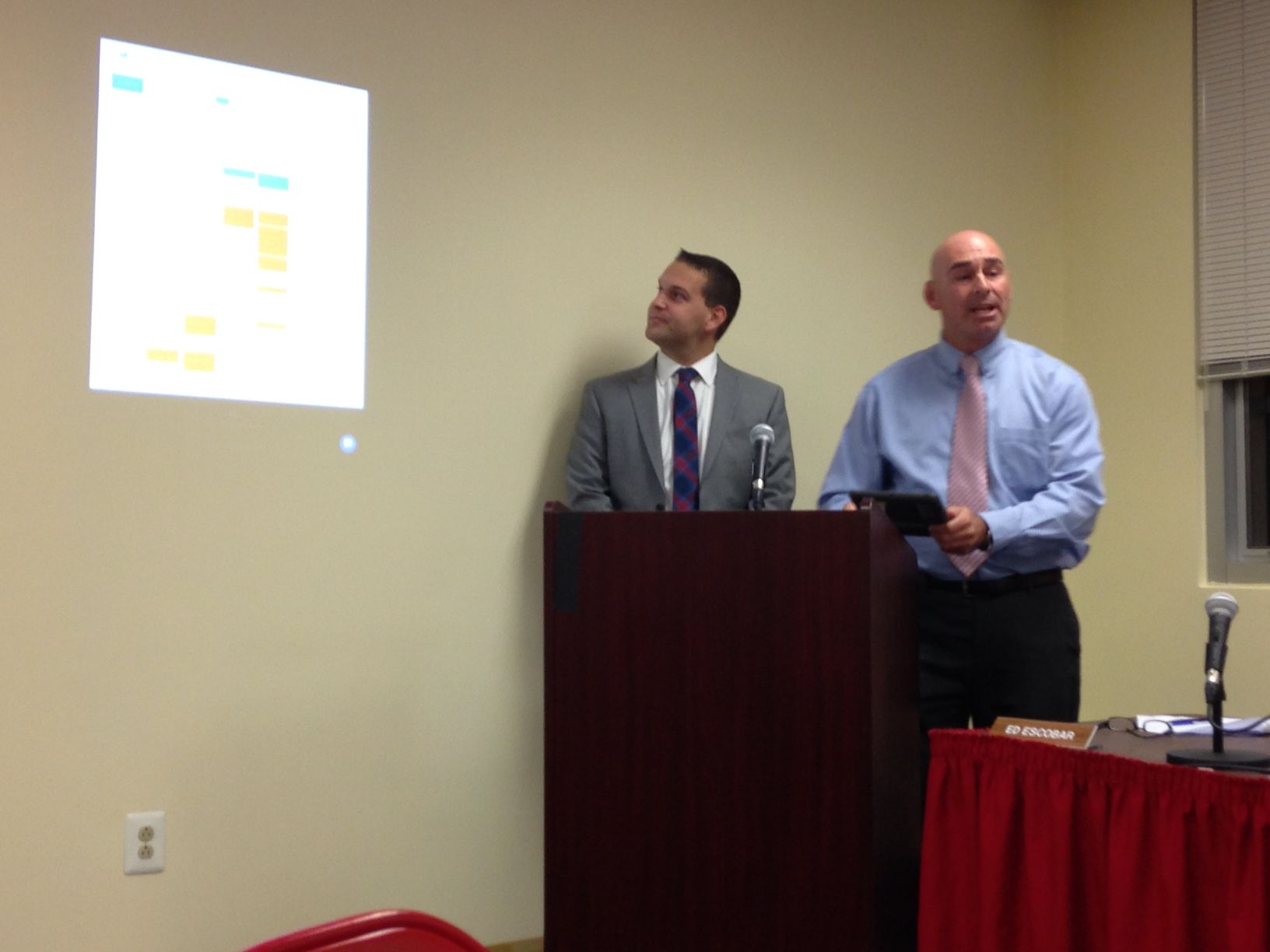Technology helps students in Mineola schools take control of their education, teachers and administrators said Thursday — and the students are loving it.
During the board’s meeting, the Mineola school trustees heard presentations from middle school math teacher Dominick Tolipano and Superintendent Michael Nagler about two programs the district is using to meet that end.
One is Mathspace, an iPad app made to guide middle school students through math lessons and help teachers tailor their instruction to individual students’ needs.
Mineola Middle School was one of the first schools in the U.S. to use Mathspace, developed by an eponymous Australian company.
Students in grades five through seven started using it there last year, and Mineola High School students in algebra, geometry and trigonometry classes started using it this year.
The app contains more than 15,000 questions that are organized into lessons around different math topics.
It shows students immediately if they get something wrong, and offers hints and a built-in textbook to help them figure out tough questions.
The app also tells teachers what any particular student struggled with on a given problem, allowing teachers to build assignments to help them improve where they need to.
“It’s a powerful tool,” Tolipano told the school board last Thursday. “It really allows students to teach themselves and learn material on their own, not just through us.”
Students are not limited to questions teachers assign them through the app. If they want to get better at certain kinds of problems, or explore more difficult material, they can select more lessons on their own.
Mathspace also gives students points and maintains a leaderboard of the top five in each class, which keeps Tolipano’s students motivated, he said.
Competition with their peers aside, Tolipano said, his students are eager to work with the app and often approach him to ask for more assignments. He has also gotten good feedback from parents, who can track their children’s assignment scores and progress.
“It allows students to take ownership of their learning, and they really enjoy it,” Tolipano said. “They can’t get enough.”
Nagler told the school board about another program that similarly aims to get students to independently learn computer science and take pride in their extracurricular activities.
The district has formed a partnership with kidOYO, a website that contains independent challenges students complete by writing code in different computer languages, such as Scratch, Python or Java.
Like Mathspace, students can work at their own pace in kidOYO. But coding lessons will be integrated into core classes in grades four, five, six and 10.
The platform allows teachers to partner with kidOYO’s staff to create coding challenges centered on course material.
The teacher provides the material they want students to learn — for example, famous historical explorers and their travels. kidOYO would then create a coding challenge where the student would write a computer program to get an explorer to move around a map.
This partnership allows the district to integrate computer science into the district’s whole curriculum rather than keeping it in high school elective courses, Nagler said.
“I’m not interested in electives,” he said. “I’m interested in every child getting the same experience. This leverages technology to make sure that every child gets the same experience.”



